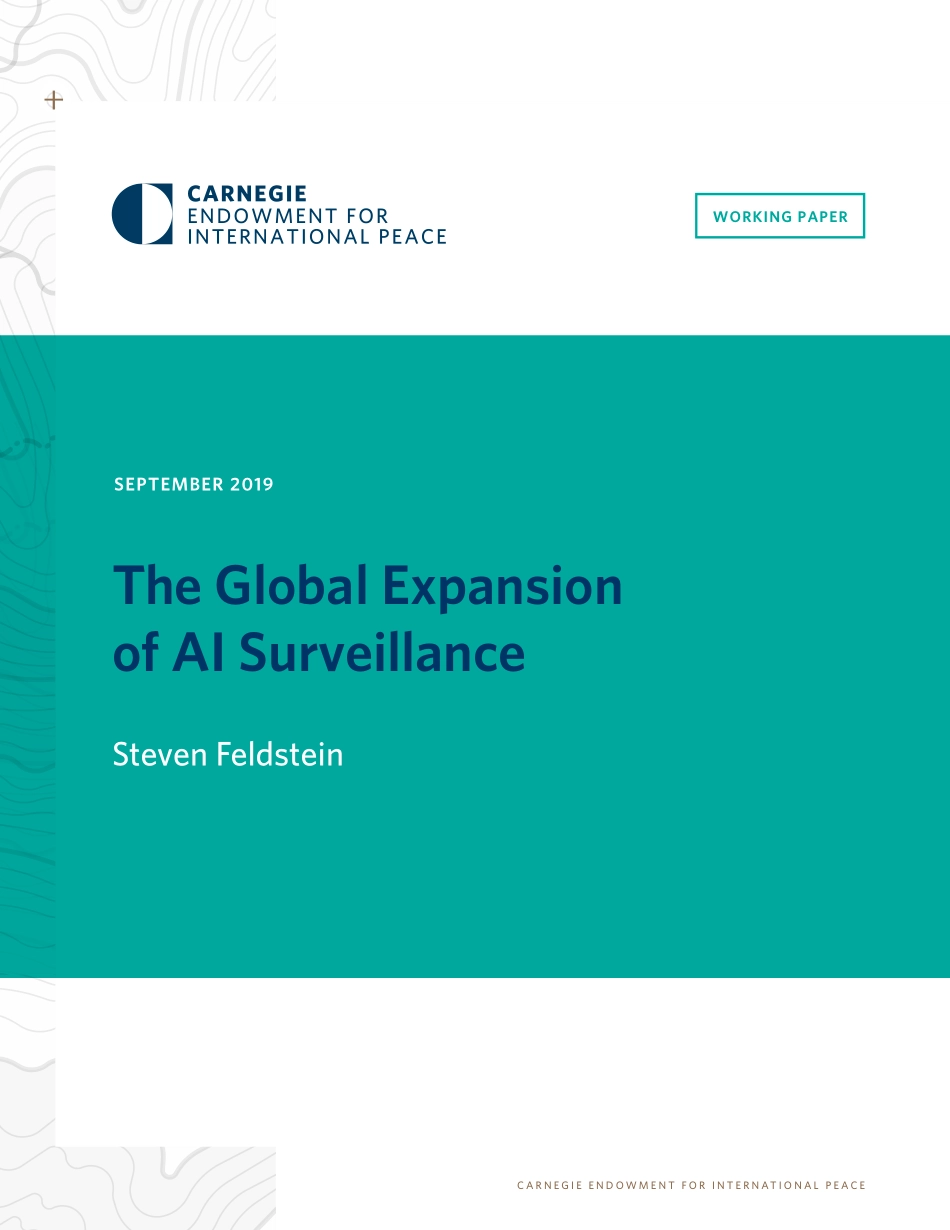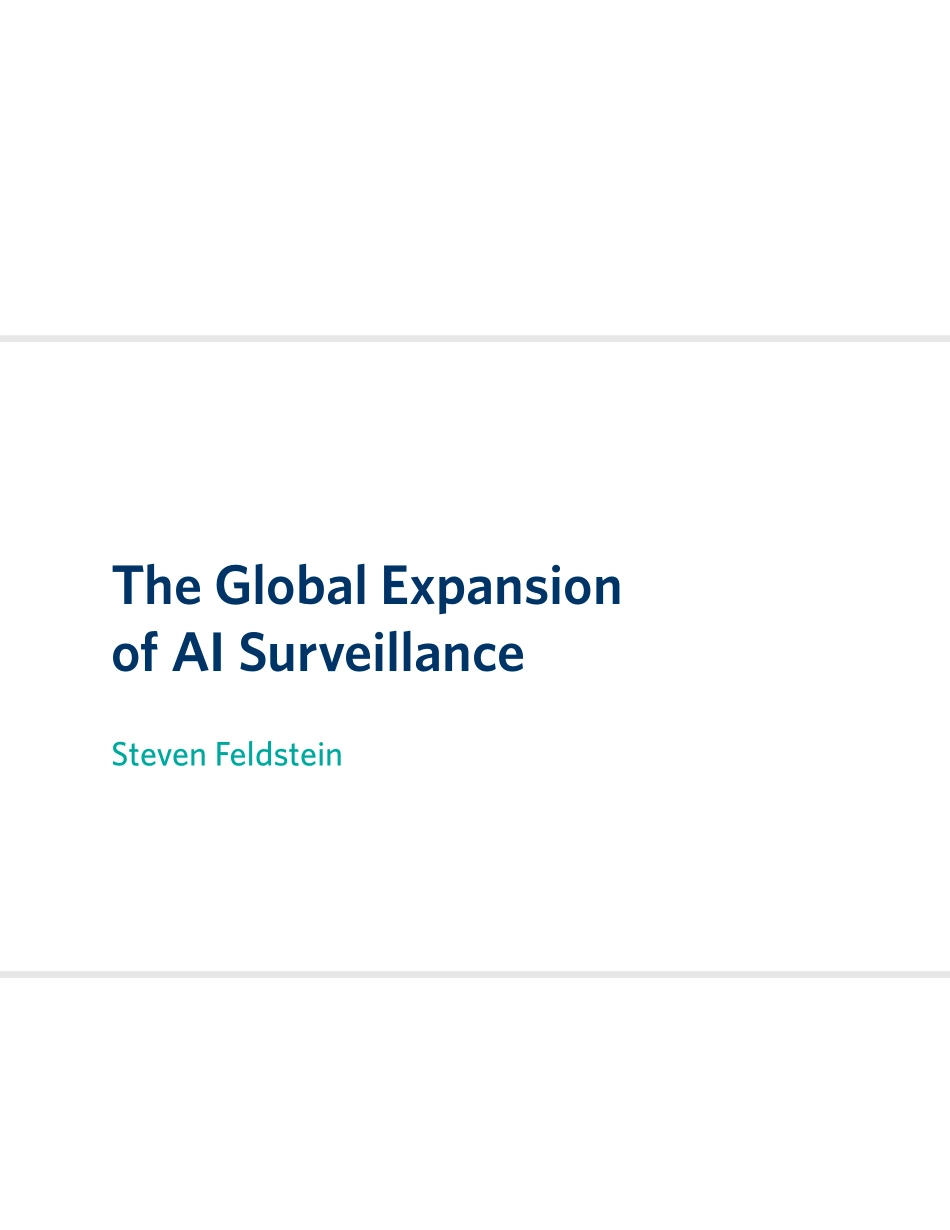+WORKING PAPERC A R N E G I E E N D O W M E N T F O R I N T E R N AT I O N A L P E A C EThe Global Expansion of AI Surveillance Steven FeldsteinSEPTEMBER 2019The Global Expansion of AI Surveillance Steven Feldstein© 2019 Carnegie Endowment for International Peace. All rights reserved.Carnegie does not take institutional positions on public policy issues; the views represented herein are the author’s own and do not necessarily reflect the views of Carnegie, its staff, or its trustees.No part of this publication may be reproduced or transmitted in any form or by any means without permission in writing from the Carnegie Endowment for International Peace. Please direct inquiries to:Carnegie Endowment for International PeacePublications Department1779 Massachusetts Avenue NWWashington, DC 20036P: + 1 202 483 7600F: + 1 202 483 1840CarnegieEndowment.orgThis publication can be downloaded at no cost at CarnegieEndowment.org.CONTENTSExecutive Summary 1Introducing the AI Global Surveillance (AIGS) Index 5Findings and Three Key Insights 7Distinguishing Between Legitimate and Unlawful Surveillance 11How Much Is China Driving the Spread of AI Surveillance? 13Types of AI Surveillance 16AI Surveillance Enabling Technologies 21Conclusion 24Appendix 1: AIGS Index 25Appendix 2: Taxonomy of Digital Repression 29About the Author 30Acknowledgments 30Notes 31+ CARNEGIE ENDOWMENT FOR INTERNATIONAL PEACE | 1 Executive Summary Artificial intelligence (AI) technology is rapidly proliferating around the world. Startling developments keep emerging, from the onset of deepfake videos that blur the line between truth and falsehood, to advanced algorithms that can beat the best players in the world in multiplayer poker. Businesses harness AI capabilities to improve analytic processing; city officials tap AI to monitor traffic congestion and oversee smart energy metering. Yet a growing number of states are deploying advanced AI surveillance tools to monitor, track, and surveil citizens to accomplish a range of policy objectives—some lawful, others that violate human rights, and many of which fall into a murky middle ground. In order to appropriately address the effects of this technology, it is important to first understand where these tools are being deployed and how they are being used. Unfortunately, such information is scarce. To provide greater clarity, this paper presents an AI Global Surveillance (AIGS) Index—representing one of the first research efforts of its kind. The index compiles empirical data on AI surveillance use for 176 countries around the world. It does not distinguish between legitimate and unlawful uses of AI surveillance. Rather, the purpose of the research is to show how new surveillance capabilities are transforming the ability of governments to monitor and track individuals or systems. It specifically asks: • Which countries are adopting AI ...


